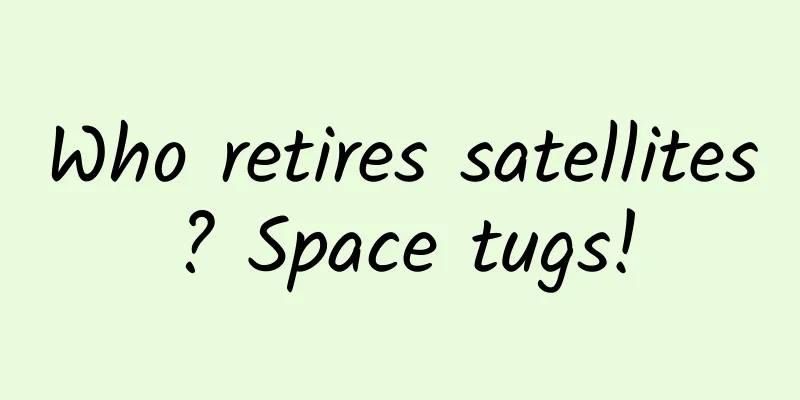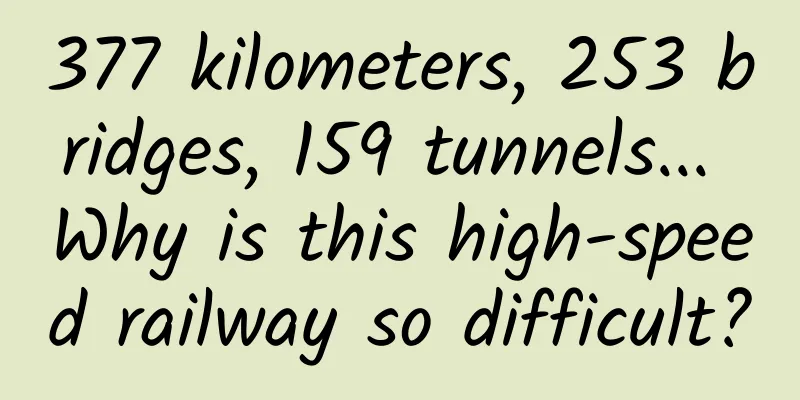Who retires satellites? Space tugs!

|
In almost every harbor, we can see a strange kind of ship. They are small, with a tall forecastle and a flat stern. These ships are equipped with super-powerful engines. They cannot carry cargo or people, but they can tow huge ships in and out. These are tugboats. Now, they also have their brothers in space. These space tugboats may even be able to tow spacecraft to the moon and Mars. Launcher's Space Tug What is a space tug used for? In traditional satellite launches, there is often a need to change the orbit of a satellite. Sometimes, a rocket can only send a satellite to a certain altitude or inclination, and then the satellite has to rely on its own engine to gradually move to the predetermined orbit. This case is most obvious when launching geostationary orbit satellites. In addition, sometimes, when a satellite completes its mission in a certain orbit, it must maneuver to another orbit. When a satellite has completely completed its mission and is ready to retire, it needs to be dragged to the graveyard orbit to give its orbital position to its successor, while also avoiding becoming orbital junk. Traditionally, such work has to be done by the satellite's own engines. The apogee engine on a geostationary satellite is a device used to send the satellite from the synchronous transfer orbit to the geostationary orbit. However, it is a heavy burden for the satellite to carry such a large orbit change engine. During the launch, it is sent into space by a rocket as part of the satellite. During most of the time the satellite is flying, the orbit change engine is idle. The task of orbit maintenance does not necessarily require a high-thrust orbit change engine. When the life of the satellite ends, it will go to the graveyard orbit with the satellite. Throughout its life, it will not have much time to play a role. The orbit change engine also needs to carry a considerable amount of fuel. When the life of the satellite ends, if the fuel has not been used up, it will be wasted. You know, every gram of weight that humans send into space is very precious. Is there a way to separate the orbit change engine from the satellite and use other spacecraft to tow them to the desired orbit? Aerospace scientists have been considering the concept of a space tugboat, that is, deploying a spacecraft with powerful thrust in orbit. It has no communication, remote sensing or navigation payloads, and its only use is like a high-powered tugboat in the port, helping other ships enter and leave the port, and can also rescue faulty ships. As a result, commercial space tugs have become an emerging business in recent years. If we search the aerospace media for the keyword "Spacetug", several unknown companies will appear, such as Australia's "Space Machine Company", the United States' "Space Flight Company", "Vector Corporation" and so on. Space Machines' tugboat proposal What did the earliest space tugs look like? Few people know that the concept of space tugs appeared as early as the 1940s. Eric Frank Russell invented this concept in his 1942 short story "Describing a Circle". There is no Chinese version of this story, and the author himself is unknown. However, he did invent the word spacetug. Some people also believe that it was Murray Leinster, a science fiction writer after World War II, who came up with this concept. He published a novel called "Space Tug", which is the sequel to "Space Platform". But it seems that Russell's idea was indeed earlier. In the novel "Describing a Circle", Russell imagined a spaceship New Jersey, which uses uranium tetrabromide as nuclear fuel, trying to enter the colony on the Hector asteroid. This asteroid is Jupiter's largest Trojan asteroid. However, according to the laws of the asteroid colony, foreign spacecraft cannot start their engines in an orbit 100 kilometers away, so the colony sent a nuclear-powered tugboat Brutus to meet them. Brutus uses a nuclear thermal rocket engine, and the nuclear fission material is sealed in a fused quartz chamber, so it is called a nuclear bulb. Russell also thoughtfully imagined the docking method of the two nuclear-powered spacecraft, which must be nose to nose, and the power part equipped with the reactor must be behind the far-end protective cover, not directly facing the cockpit. According to these early concepts, space tugs are small manned craft with disproportionately large engines and manipulators, just like the concept of a port tugboat. There are two ways for a tugboat to propel its service. If it is to push, a huge push plate is set up at the bow, and there is a structural core that transmits the thrust of the engine to the push plate. If it is to tow, there will be cables and winches at the stern, and the engine will be tilted at a certain angle to spray backwards so as not to burn the towed spacecraft. But in this case, there will be a slight loss of thrust. What exactly is a space tug? Today, a space tug is more clearly defined as a spacecraft that can transfer objects in space from one orbit to another, for example, moving a spacecraft from low Earth orbit (LEO) to a higher orbit such as geostationary transfer orbit, lunar transfer orbit, or escape orbit. Generally speaking, a space tug refers to a reusable space-based vehicle. Some people also call the rocket upper stage a space tug. The upper stage is part of the launch vehicle, and in many cases it is used to implement a multi-satellite launch mission, such as China's Expedition 1 upper stage, the United States' Centaur upper stage, and Russia's Breeze upper stage. However, the use time of the upper stage is also limited. When all satellites have entered the predetermined orbit, the mission of the upper stage is completed. At this time, most of the components of the upper stage, including the structure, fuel tanks, thrusters, attitude and orbit control systems, are in good condition. It is a bit of a waste to just throw them in space. There is also a new concept spacecraft that has been classified as a space tug by supporters. That is the Geostationary Satellite Life Extension Vehicle MEV, first launched by Northrop Grumman. The technology it uses has many similarities with space tugs. On-orbit servicing is sometimes classified as tugboat But there is a difference between spacecraft such as rocket upper stages and satellite life extension devices and space tugs. Space tugs are just devices that tow spacecraft between different orbits or even different celestial bodies. Once they are in place, the two will separate, just like a high-powered tugboat at a port. How is the space tug developing now? After entering the 21st century, many companies have tried to develop space tugs. In 2005, the Russian Energy Company proposed a space tug concept called Parom. At that time, Russia was considering developing a new generation of manned spacecraft called "Clipper". With the Parom tug, "Clipper" can go to the sky without fuel, and after entering the transfer orbit, it will be sent to the International Space Station by tugboat. This can reduce the cost of launch. In 2015, Lockheed Martin proposed a concept plan called "Jupiter" space tug to NASA. The plan is based on the design of Lockheed Martin's two early spacecrafts, "Mars Atmosphere and Volatile Evolution Mission" and "Juno", and is equipped with a Canadian MDA company's robotic arm. However, NASA did not provide funding for it, so Lockheed Martin gave up. These models were not successful because, when space launches were not too frequent and the commercial launch market was not mature, space tugs could not find enough customers and there was no basis for their development and operation. Nowadays, with the frequent launch of various rockets, space launches are getting closer to flight operations. The Falcon 9 rocket has achieved more than 40 launches per year, almost once a week, and it is possible to launch twice a week in the future. In addition, with the rockets that other countries are developing and have the potential to achieve flight operations, it is very likely that rockets will be launched several times a day in the next few years. For rocket launches, the ideal way is to send satellites to a certain orbital plane and then use other methods to send them to the predetermined orbit. This can greatly improve the efficiency of rocket flight. If there is a tugboat that operates in orbit for a long time, constantly towing satellites from their original orbits to their respective predetermined orbits, wouldn’t it become a profitable business? Such services are available in many seaports. Many large ships are prone to collisions when docking or leaving the port because of their large size and poor operation. At this time, tugboats are needed to accurately deliver them to the designated location. If a ship has an accident at sea, a tugboat is also needed to rescue it. Some ships that have lost power can only be towed by high-powered tugboats for long-distance voyages. When a ship is scrapped and needs to enter a shipbreaking yard, a tugboat is also needed to push the ship to the beach. Space tugboats can undertake similar tasks, but the scene has been changed to space. From the perspective of aerospace technology itself, this is equivalent to setting up an upper stage that operates in orbit for a long time, which can be shared with many satellites for use. The owner of each satellite only needs to pay for his own section of the flight, without having to buy a complete orbit change engine system or upper stage. It is quite cost-effective when you think about it. As a result, many emerging companies have proposed the concept of "space tug as a service", hoping to give satellite owners greater flexibility in deploying and maintaining satellites. The market demand for the space tug is known as a commercial last-mile delivery service. Phil Bracken, vice president of engineering at Spaceflight, said: "The space tug has the potential to fundamentally change the small satellite market. With this service, orbits that were once inaccessible are now a viable option for satellite owners, meeting the growing market demand for orbital diversification." In recent years, a large number of small satellites have been put into orbit, but most small satellite customers are only conducting technology demonstrations. Some owners of large-scale constellations will purchase large rocket services to deploy constellations. However, many small satellites must reach very special orbits to obtain the best revenue-generating services. This "extreme final orbit state" cannot be achieved by either piggyback launch services, rideshare launch services, or dedicated small launch vehicles, which provides an opportunity for space tugs. In addition, in order to reduce space debris and deorbit the scrapped satellites, there is also a demand for space tugs. Some companies have expressed their intention to provide space tug services from cradle to grave. Space tugs could be used to clean up orbital debris For example, Spaceflight has developed a system called Sherpa. It is a similar upper stage with propulsion and power systems. In December 2018, Sherpa made its first flight on a Falcon 9 rocket, deploying 64 small satellites from 17 countries. But it is closer to an upper stage than a reusable tugboat. Sherpa space tug is more like an upper stage Italian space logistics and transportation company D-Orbit developed the InOrbitNOW (ION) satellite vehicle. On May 25, 2022, the company launched its sixth vehicle, Infinite Blue, aboard a Falcon 9 rocket as part of the Transporter-5 mission. With a space tug, the satellite enters a waiting orbit after launch, and then is sent to the predetermined orbit by a tug. With such a service, the owner can reduce the satellite's own orbit change capability, or even completely ignore the orbit change capability and rely entirely on the tug, thereby reducing costs. "Space Tug has the potential to fundamentally change the small satellite market," said Phil Bracken, vice president of Spaceflight Engineering. "With on-orbit propulsion capabilities, orbits that were once inaccessible due to cost or propulsion capabilities will be viable options, meeting the growing market demand for orbital diversity." What fuel should a durable space tug use? Since it is a long-term tugboat, it is impossible to use chemical fuels that are quickly consumed, such as anhydrous hydrazine. Space tugboats need an energy source that can be used for several years without replenishing consumables. So far, there are two technical means to achieve this requirement. The first is the electric rocket engine and the second is the nuclear power engine. Of course, there may be overlaps between these two technologies. The electric rocket engine is very familiar to us. It relies on solar energy or nuclear energy to provide electricity and generates thrust by ejecting ions at high speed. The problem with this engine is that the thrust is relatively small, such as one or two Newtons. It may take a long time to use it to tow a satellite. It is suitable for customers who are not in a hurry to put the satellite into use. There are also two types of nuclear power. One is to use isotope batteries to generate electricity for ion engines; the other is a nuclear thermal rocket generator, which heats a medium such as water to a gas state through a reactor, has a very high pressure, and then ejects it at a speed of more than 9,000 meters per second. Although the specific impulse of a nuclear thermal rocket engine is much smaller than that of an ion engine, the total thrust that can be achieved is very considerable. For example, the VASIMR plasma rocket proposed by Russia only needs 9 tons of argon propellant to travel to and from the moon, transporting 34 tons of cargo from low Earth orbit to low lunar orbit. Space tugs generally use ion engines How a space tugboat can tow away a satellite is also a technical problem that needs to be solved. If you just want to tow a satellite to a graveyard orbit for scrapping, then you can install a set of manipulators on the tugboat, use the manipulators to grab the old satellite indiscriminately, start the engine and set sail. However, if you want to send a new satellite to a working orbit, the rough operation of the manipulators is likely to damage the satellite. Therefore, it is necessary to design a standardized interface for the latter purpose, and securely connect the tugboat with the serviced satellite using a manipulator arm or other connector, and then tow it to the predetermined orbit. This is actually a space rendezvous and docking for a cooperative goal. On this issue, the docking of manned spacecraft modules can provide us with a lot of technical references, especially the standardized interface between the robotic arm and module components of the space station, which provides good conditions for the robotic arm to transfer the module. If the space tug is to provide services to the entire aerospace industry, the industry must unify a universally applicable interface standard. This work has not yet been fully put on the agenda. According to the general rules of the industry, this matter needs to be decided through commercial competition. |
Recommend
iOS Development Tutorial: Gesture Recognition Method
I feel it is necessary to make a brief summary of...
Large-screen cloud collaboration creates diverse value, LeTV Cast won the "Industry Ecosystem Contribution Award"
Ecologization is an important sign of industrial ...
As the number of fans in Greater China continues to decline, what is the point of Apple betting on India?
Recently, Apple released its first quarter financ...
Apple developers have no choice: iOS 9 is expected to support iPhone 4S
[[135011]] According to Apple's previous soft...
Have you been officially diagnosed as a "rat person" on the Internet? The reason may not be laziness, but low energy
Recently, a niche track has become popular on soc...
A picture to understand the front-end performance optimization of Html5
Overview 1. PC optimization methods are also appl...
SF Express’s triple-proof mobile phone is tested: automatically reset to zero at midnight!
Two weeks ago, spy photos of SF Express's thre...
Aerobic exercise can help you lose weight while anaerobic exercise can help you gain weight. Is it really that absolute?
In the national fitness trend, there are two word...
Sogou charges and account opening. What should I pay attention to when opening a Sogou bidding account?
Sogou bidding promotion is one of the bidding pro...
Exploring quantum supremacy: Towards a supercomputing revolution
Quantum supremacy refers to the fact that quantum...
Analysis of Mixue Bingcheng’s marketing plan!
Some time ago, the popularity of Mixue Bingcheng ...
Guide to optimizing advertising landing pages in the dental industry!
As we all know, in actual operation, some subtle ...
Google will abandon RenderScript in Android 12 and switch to Vulkan
Google announced today that with the launch of An...
I have heard of "husband and wife look alike", but what the hell is "human-dog look alike"? !
According to a study by Weird Psychology author W...
Why the horse-faced skirt has become the new top trend in the fashion circle? Thousands of years of evolution history will tell you
Contemporary Society Wearing a horse-faced skirt ...









